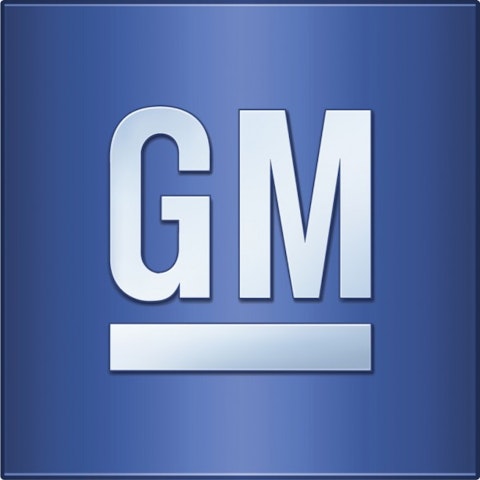A rapidly growing US auto market has overshadowed the pace of growth of the Chinese auto industry where sales have displayed a stellar growth rate of 13% since the start of the year. April industry-wide auto sales were also up by 13.4%. The demand for SUVs rose noticeably (56%), which was mainly triggered by new models offered by joint ventures (JVs) of General Motors Company (NYSE:GM) and Hyundai with their respective Chinese local brands.
Which companies are benefiting the most? Which are lagging behind and why? These are the important questions that need to be answered before we formulate an investing strategy.
US original-equipment manufacturers (OEMs)
When we talk about the growth of auto players in China, in the context of US equities we generally tend to discuss either US or Japanese OEMs.
Strong performance of passenger car sales is a good sign for General Motors Company (NYSE:GM) and Ford Motor Company (NYSE:F). GM, along with its JVs, accelerated the pace of sales gains in April, as GM and its JVs sold 261,870 units, resulting in a 15.3% increase on a year-over-year basis. The strong performance was once again led by Shanghai GM, which increased deliveries by 29% to 121,559. Within Shanghai GM, Buick brand sales increased 24% to 66,923 units and Chevrolet sales increased 22% to 50,559 units. Cadillac sales increased 99% to 4,077 units as the brand continued to benefit from demand for the XTS sedan that was introduced in March.
The strong sales gains come just as GM has won regulatory approval to build a Cadillac factory near Shanghai that will have an annual capacity of 150,000 units. SAIC-GM-Wuling (a JV between SAIC Motor, General Motors Company (NYSE:GM) and Liuzhou Wuling Motors) increased unit sales by 6% to 134,815, while FAW-GM (a JV between GM and FAW Group) deliveries fell 0.3% to 5,124. Through the first four months of the year, GM, along with its JVs, increased sales by 10.9% to 1,078,243 units.
On the other hand, Ford Motor Company (NYSE:F) also displayed promising results. The company increased sales 37% to 75,331 vehicles. The strong performance was once again led by the Ford Focus, which increased volumes 41% to 30,673 units. The strong performance is expected to continue moving forward as Ford continues to benefit from the recent launches of the Kuga and EcoSport utility vehicles. Together with the Edge, Ford now competes in every segment of China’s SUV market.
Senkaku-Diaoyu Islands tension and Japanese OEMs
The renewal of tension surrounding a territorial dispute of the Senkaku-Diaoyu islands brought Japan and China to an ugly political confrontation in the second half of last year. Among many other things, the Japanese auto players suffered a great deal as their products were boycotted in China. The anti-Japan sentiment saw the sales of Toyota Motor Corporation (ADR) (NYSE:TM), Nissan Motor Co., Ltd. (ADR) (PINK:NSANY), Mazda, Suzuki and Honda Motor Co Ltd (ADR) (NYSE:HMC) plummet to record lows. Meanwhile, US OEMs have seen their sales jump enormously in the region as a result of simple zero-sum game. That being said, Japanese players haven’t lost hope.
Recently, the group has decided to localize its brands in China in order to avoid anti-Japan sentiment to affect their sales. On one hand, this action will help the group to regain its lost ‘prestige’ in the area. However, looking from a long-term perspective, such an action can cause great deal of volatility in the quality standards of the cars as the Japanese OEMs will now get their supplies from local Chinese players. A harm to reputation (decline in quality) can cost this group in the long run.
Let’s have a holistic look
I remain bullish on GM. General Motors Company (NYSE:GM) is expected to benefit from its upcoming K2XX full-size pickup truck launch, which will provide a significant boost to earnings over the second half of 2013 to the first half of 2014 time frame.
Overall, the stock is a cheap buy. The stock is trading at a cheap 7 times earnings, well below the average consumer-goods sector multiple of 13. The company is set to grow under the iron-fisted CEO Dan Akerson, who vows to remove the ‘Government Motors’ label from the company.
The company is actively restructuring its European operations, which have long been a drag on the company’s performance. And above all that, the company is undergoing the biggest product launch since its inception. General Motors Company (NYSE:GM)’s current product portfolio is the oldest in the industry. GM’s management believes that it will take another 15 months to turn the whole portfolio over.
Similarly, I am bullish on Ford Motor Company (NYSE:F) as well. The company’s future looks bright in regards to its small-car sales in the near future, in particular. It is obvious that small fuel-efficient cars are demanded in higher numbers in recessionary times. According to Ford, its small-car sales soared 29% in 2012. The new C-Max hybrid is a big success. Also, Ford’s F-series truck was declared as the most sold light vehicle in the US with an astounding sales figure of 645,316 units in 2012.
Overall, the stock is a cheap buy given its forward multiple of 8. In fact, Goldman Sachs Group, Inc. (NYSE:GS) sees it as a must buy. The firm places Ford Motor Company (NYSE:F) on its conviction list due to the stock being cheap and the company actively working to restructure its European operations under the One Ford strategy.
Toyota’s net income flying high
Recently, Toyota Motor Corporation (ADR) (NYSE:TM) reported its largest annual profit in five years. Now the company expects its net income to jump 42% through 2014, which shows its phenomenal growth rate. Though the company has seen its market share declining in the US recently, it still has a solid footing in that region with the help of the popularity enjoyed by its Corolla and Camry brands.



